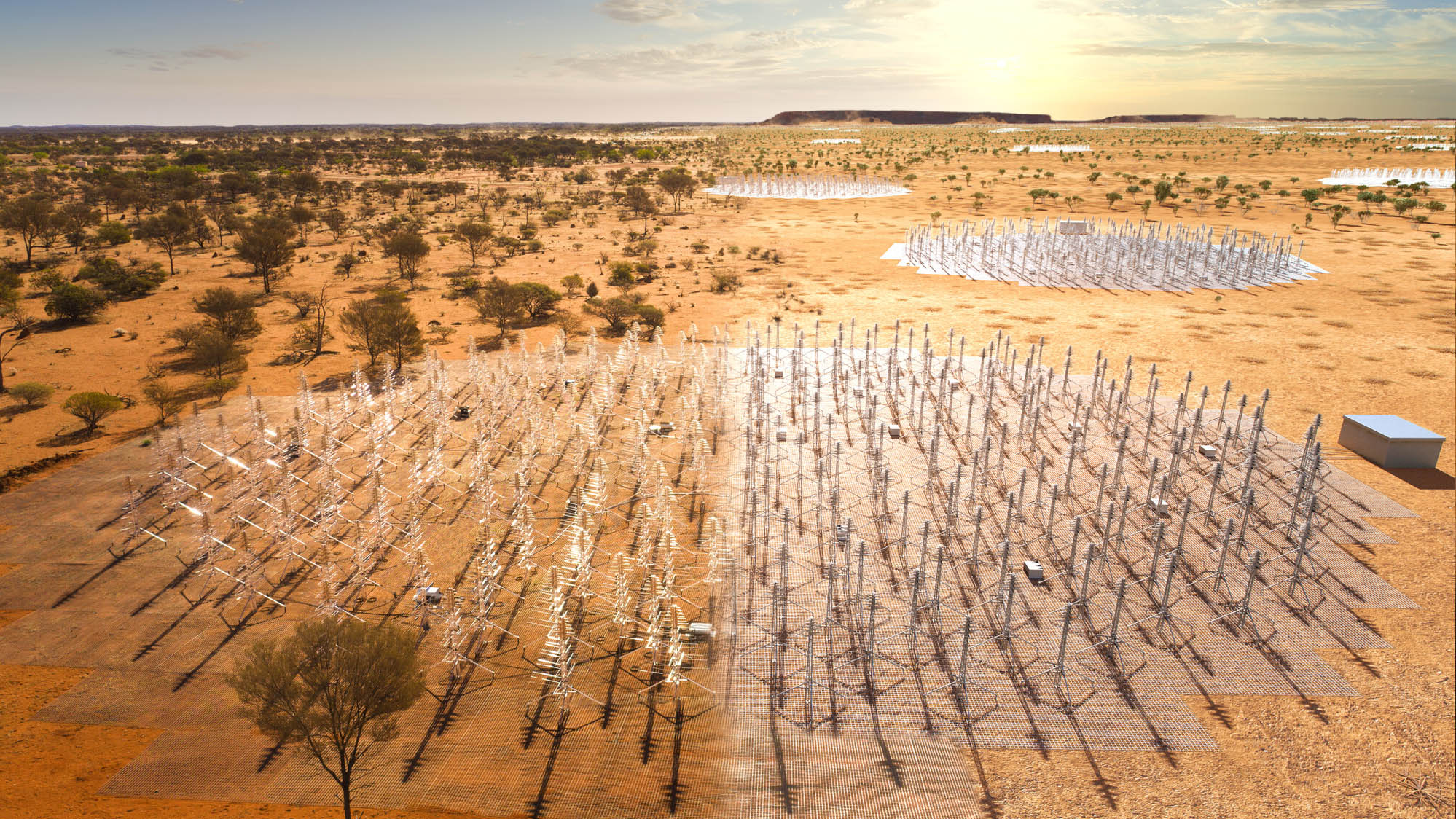Construction begins on world's largest radio telescope after decades of preparations
The Square Kilometer Array Observatory has been 30 years in the making.

Ground has finally been broken today at two sites in Africa and Australia that will host the Square Kilometre Array Observatory (SKAO), the largest radio telescope in the world.
Construction of the SKA-Mid array, to be located in the Karoo desert in South Africa, and the The SKA-Low array, in Western Australia north of Perth, has begun after 30 years of preparations and a year and a half of preconstruction work that involved selecting the right companies for the job.
"The SKA project has been many years in the making," Catherine Cesarsky, the chair of the SKAO council, who attended a ground-breaking ceremony at the South African site, said in a statement. "Today, we gather here to mark another important chapter in this 30-year journey that we’ve been on together. A journey to deliver the world’s largest scientific instrument. After 18 months of intense activities around the world, we are starting construction of the SKA telescopes."
The SKA-Mid array in Karoo wil scan the sky for sources of radio waves in the middle frequency range from 350 MHz to 15.4 GHz using 197 dishes, each 50 feet (15 meters) in diameter. The SKA-Low array in Australia will rely on 131,072 dipole antennas to detect radio waves of frequencies between 50 to 350 MHz.
Radio waves, which have much longer wavelengths than visible light, penetrate through dust and debris, allowing astronomers to peer into regions of space that are obscured from other types of observatories.
Thanks to its vast size, SKAO will be incredibly sensitive, allowing astronomers to detect signals from objects in the farthest reaches of the universe, the light from which has traveled to us for so long that we can see them as they looked shortly after the Big Bang.
Get the Space.com Newsletter
Breaking space news, the latest updates on rocket launches, skywatching events and more!
"The SKA telescopes will truly revolutionize our understanding of the universe," Cesarsky said in the statement. "They will allow us to study its evolution and some of its most mysterious phenomena in unprecedented detail, and that's really exciting for the scientific community."
The telescopes, which will have a total collecting area of one square kilometer, as their name suggests, will be completed by the end of this decade, but astronomers hope they will be able to start using some of the antennas as soon as their construction is completed. The first four SKA-Mid dishes and six SKA-Low stations will be able to work together as a single telescope, SKAO said in the statement.
The first two antenna stations are due to be completed by May 2023, while the first dish is set to be installed in April 2024, followed by the completion of an additional three to four dishes each month, according to the SKAO statement.
Building the telescope will require laying down a vast infrastructure of power and fiber to connect and support the antennas that will be arranged in spirals with a diameter of nearly 2,000 miles (3,000 kilometers). Since June 2021, when the SKAO council finally approved the construction, the organization has selected key companies to complete this part of the installation.
SKAO representatives told Space.com in an earlier interview that their aim is to build "the world's most sustainable research facility" that will receive the majority of its energy requirements from renewable resources.
Due to the extreme sensitivity of the antennas, the arrays need to be located in remote locations where the use of conventional radio receivers is prohibited in order to avoid signal disturbance. The land in the vicinity of both arrays is inhabited by indigenous communities, which participated in the ground-breaking ceremonies on Monday. SKAO previously committed to create job opportunities for these communities, including contracting local companies for a portion of the required work.
"This event marks a wonderful milestone for the SKA Observatory and the world’s science community," 2KA-Low site construction director, Ant Schinckel, said in the statement. "We are about to begin building the world's largest radio telescopes, and here in Australia, we are doing it with the support and close cooperation of some of the oldest astronomers in the world, the Wajarri people. I am excited to start constructing the SKA-Low telescope on this ancient land, so ideally suited for radio astronomy.”
SKAO awarded over 40 contracts worth more than $157 million (€150 million) over the past 18 months, with an additional $315 million (€300 million) worth of agreements being announced during the ceremonies on Monday.
SKAO's 16 member states jointly fund the $1.55 billion (€1.3 billion) construction of the telescope and the $0.83 billion (€0.7billion) required for the first decade of its operations.
The telescope will serve astronomers for at least 50 years.
Follow Tereza Pultarova on Twitter @TerezaPultarova. Follow us on Twitter @Spacedotcom and on Facebook.
Join our Space Forums to keep talking space on the latest missions, night sky and more! And if you have a news tip, correction or comment, let us know at: community@space.com.

Tereza is a London-based science and technology journalist, aspiring fiction writer and amateur gymnast. Originally from Prague, the Czech Republic, she spent the first seven years of her career working as a reporter, script-writer and presenter for various TV programmes of the Czech Public Service Television. She later took a career break to pursue further education and added a Master's in Science from the International Space University, France, to her Bachelor's in Journalism and Master's in Cultural Anthropology from Prague's Charles University. She worked as a reporter at the Engineering and Technology magazine, freelanced for a range of publications including Live Science, Space.com, Professional Engineering, Via Satellite and Space News and served as a maternity cover science editor at the European Space Agency.
